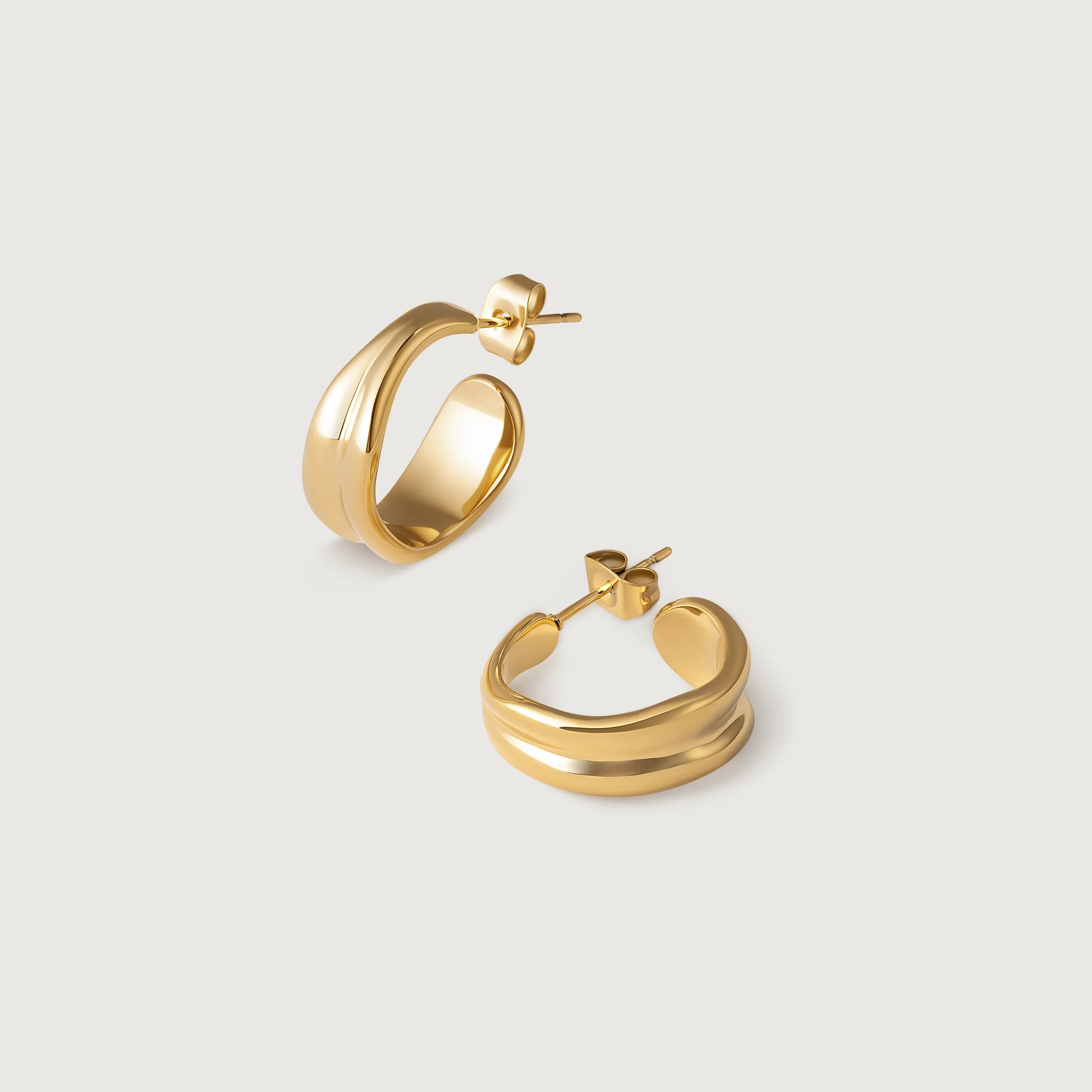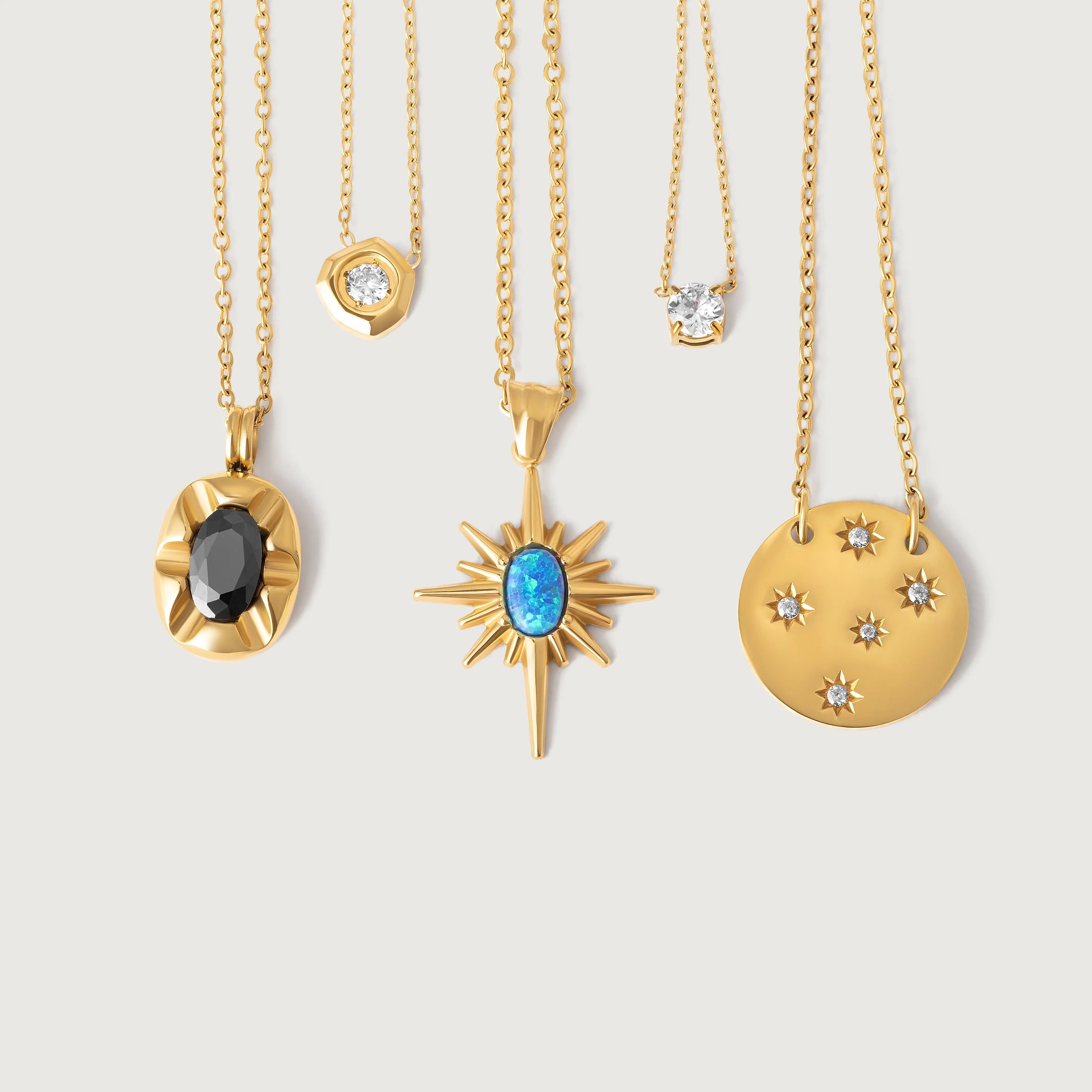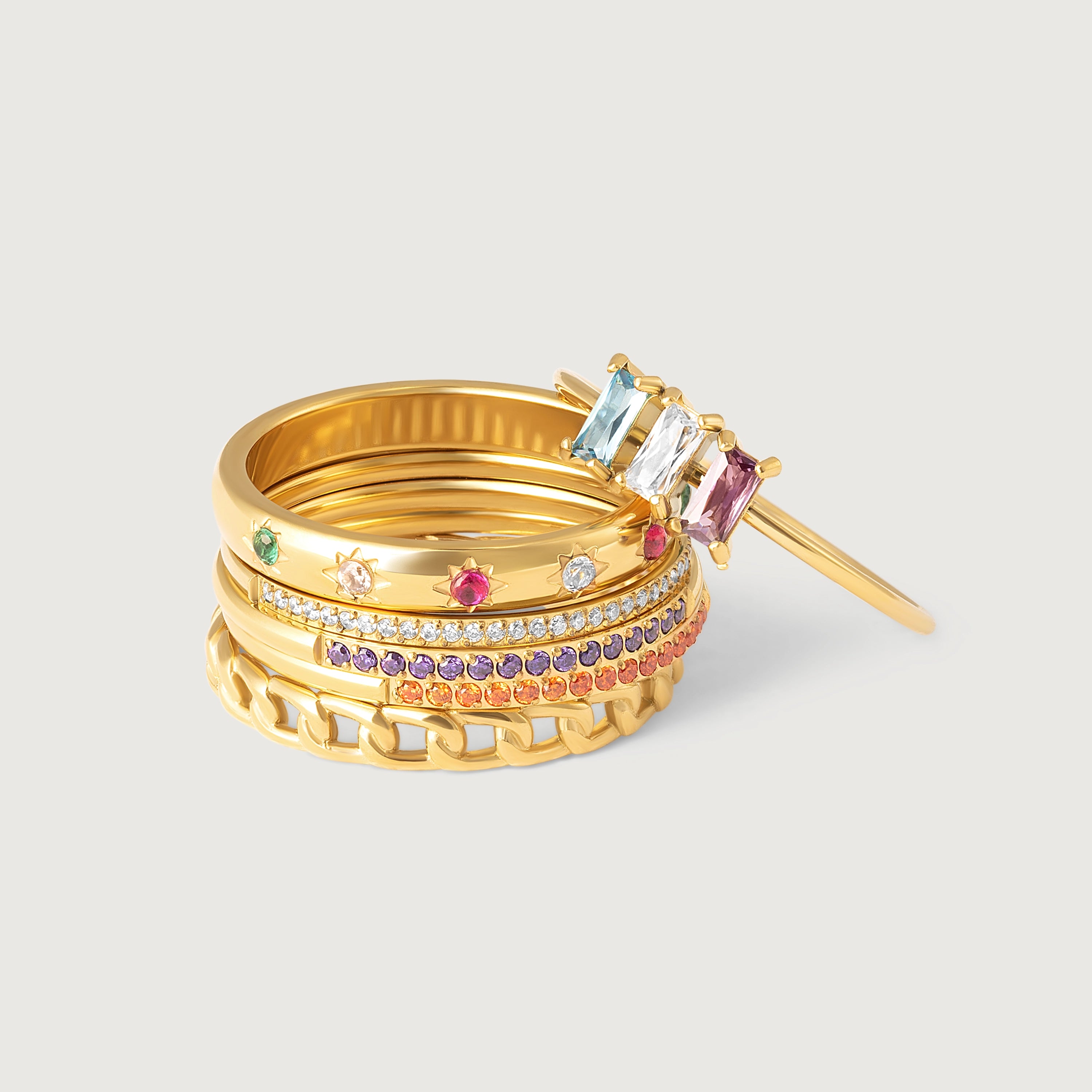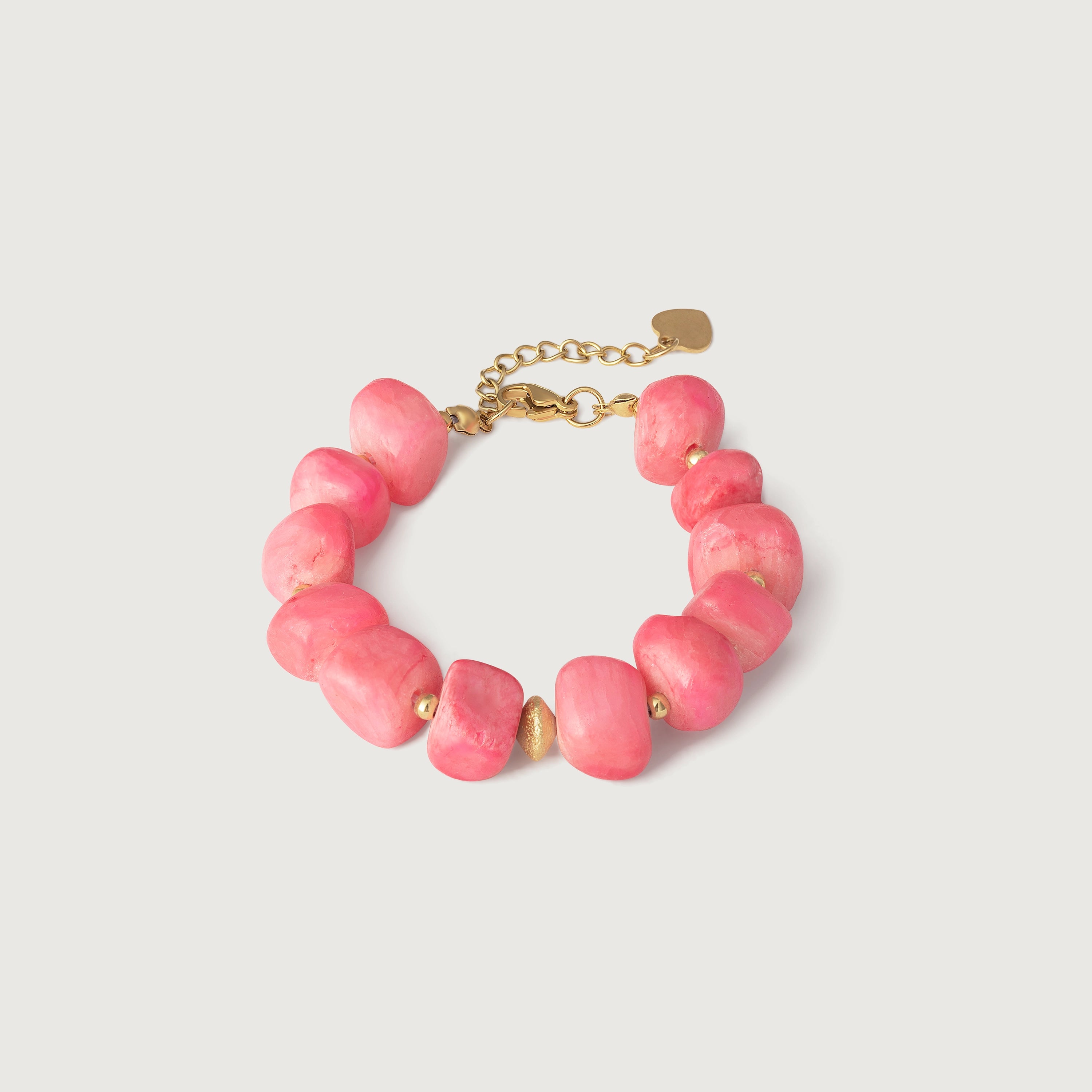Missed Part 1? Catch up on 5 Jewellery Trends Gen Z is Actually Buying
This isn't just about age. It's about a fundamental shift in how an entire generation relates to jewellery, luxury, and self-expression. And most brands—even those actively trying to reach Gen Z—are getting it spectacularly wrong.
The Stakes: By 2030, Gen Z is expected to represent 30% of all luxury purchases. Brands that don't understand this generation's unique psychology and values won't just miss opportunities—they'll become irrelevant.
The Psychology Behind Gen Z Jewellery Purchases
Jewellery as Personal Archive
Previous generations often viewed jewellery through the lens of investment or occasion. A watch for graduation. An engagement ring for marriage. Anniversary jewellery marking milestones. These pieces served as markers of life's significant moments, chosen for their ability to be passed down.
Gen Z approaches jewellery entirely differently. For them, jewellery functions as a personal archive—each piece tells a chapter of their ongoing story. They're not collecting heirlooms to leave behind; they're curating collections that express who they are right now.
This shift has profound implications. It means Gen Z values jewellery that reflects current identity over pieces chosen for longevity. They're comfortable with jewellery collections evolving as they evolve, buying pieces that resonate today without worrying whether they'll still love them in twenty years.
The Wardrobe Mentality
Euromonitor's 2023 report found that Gen Z jewellery consumers are "more frequent shoppers" who "value the ability to build a jewellery wardrobe they can choose from to express their identity." This isn't impulsive buying—it's strategic collection building.
The "Agents of Chaos" Phenomenon
Fashion publication Matter of Form coined the term "agents of chaos" to describe Gen Z's approach to jewellery. They observe that this generation seeks designs with "embellishment to the point of impracticality"—pieces that reject minimalism and embrace maximalist expression.
But there's method to this chaos. Gen Z has grown up during unprecedented global uncertainty—climate crisis, pandemic, economic instability, political polarization. Their jewellery choices reflect a generation that's learned to find joy and self-expression despite external chaos.
Bold jewellery becomes a form of armor, a way to claim space and project confidence. When the world feels unstable, personal style becomes something you can control. Jewellery offers a way to assert identity in an environment that often feels beyond individual influence.
Self-Expression vs. Status Symbols
Here's where Gen Z diverges most dramatically from previous generations: according to Bain & Company's 2024 report, 48% of Gen Z luxury buyers prioritize self-expression over brand recognition. This isn't slight preference—it's a fundamental reordering of jewellery's purpose.
Logo-heavy designs that previous generations coveted hold little appeal. Gen Z would rather wear a unique piece from an unknown designer that reflects their personal aesthetic than a recognizable luxury brand that signals wealth. The value proposition has shifted from "what this says about my status" to "what this says about me."
Previous Generations
- Jewellery as investment
- Brand recognition important
- Heirloom mentality
- Occasion-driven purchases
- Status signaling
Gen Z Approach
- Jewellery as self-expression
- Uniqueness prioritized
- Wardrobe building
- Regular, smaller purchases
- Identity communication
The Non-Negotiable Values
Value #1: Sustainability Isn't Optional
The numbers are unambiguous: 71% of Gen Z luxury buyers say brand values are a major factor in their purchasing decisions, according to McKinsey & Company's 2024 research. And when asked about sustainability specifically, 73% of Gen Z consumers report they're willing to pay more for sustainable products.
But here's what brands often miss: Gen Z's relationship with sustainability is complex and sometimes contradictory. They care deeply about environmental impact, yet they also participate in fast fashion and trend cycles. Understanding this paradox is crucial.
Gen Z has grown up with climate change as an undeniable reality. Unlike previous generations who came to environmental awareness later in life, this generation has always known the planet faces existential challenges. This creates baseline expectation that brands must address environmental impact—not as marketing differentiator, but as basic requirement.
Complete Transparency
Vague "eco-friendly" claims backfire. Gen Z researches everything and can spot greenwashing instantly. Specific certifications and data required.
Ethical Labor Practices
Sustainability extends beyond environmental impact to human impact. Working conditions and fair wages matter.
Circularity Programs
Expected: resale programs, recycling initiatives, buyback schemes. Jewellery shouldn't end up in landfills.
Honest Communication
Admitting limitations and showing improvement journey resonates more than claiming perfection.
The Contradiction: Gen Z values sustainability yet embraces trend cycles. The key is understanding they want options—sustainable choices for investment pieces, affordable trend pieces for experimentation, and clear communication about which is which.
Value #2: Authenticity Over Everything
Gen Z has grown up watching social media destroy carefully crafted brand images through a single viral moment. They've seen influencers exposed as inauthentic, companies caught in scandals, and "perfect" Instagram lives revealed as edited fiction. This generation approaches all marketing with healthy skepticism.
For jewellery brands, this means brand heritage alone no longer impresses. A century-old company name matters less than demonstrable values and transparent practices. Gen Z researches brand behavior on social media, checks how companies respond to criticism, and evaluates whether stated values align with actions.
The Authenticity Test
Gen Z asks these questions before purchasing:
- Where do materials actually come from?
- Who made this piece and under what conditions?
- How does the brand handle criticism?
- Do their social media and advertising reflect diverse communities?
- What's their stance on social/political issues I care about?
Political and social stances matter. Gen Z expects brands to take positions on issues—remaining "neutral" often reads as complicity. However, these positions must be genuine. Performative activism gets called out immediately and damages brands more than staying silent.
Value #3: Digital-First is Default
According to Shopify's 2024 data, 80% of Gen Z prefers to shop online, with over 60% discovering products via Instagram, TikTok, or YouTube. But "digital-first" goes deeper than sales channel preference—it fundamentally changes how jewellery is discovered, evaluated, and purchased.
Gen Z's jewellery journey typically starts with social media inspiration. They see a piece in an influencer's content, a friend's post, or trending on their feed. This triggers research phase—reading reviews, checking brand values, comparing prices, looking for discount codes. Finally, they purchase, often expecting immediate shipping and easy returns.
The key insight: Gen Z expects seamless integration between social media, brand website, and purchase experience. A TikTok video should link directly to product page. Instagram posts should be shoppable. Website should be mobile-optimized because they're browsing on phones.
The Self-Gifting Revolution
One of the most significant shifts in jewellery purchasing patterns is Gen Z's embrace of self-gifting. According to Mintel's 2024 research, 39% of jewellery shoppers now treat themselves compared to 49% who buy as gifts. For Gen Z specifically, self-gifting represents even higher percentage of purchases.
This trend has profound implications for jewellery marketing. Traditional jewellery advertising focuses heavily on gift-giving occasions—Valentine's Day, Mother's Day, anniversaries. Gen Z doesn't need occasions. They buy jewellery to mark personal achievements, celebrate mood changes, or simply because a piece resonates.
The Psychology of Self-Gifting
Self-gifting represents several overlapping psychological needs. First, it's self-care—treating oneself as worthy of gifts previously only others provided. Second, it's instant gratification in generation comfortable with regular small purchases over occasional large ones. Third, it's collection building toward expressing evolving identity.
Matter of Form notes that almost half of Gen Z consumers surveyed splurge once a month or more on products for themselves—higher percentage than Gen X (34%) or Millennials (43%). This isn't frivolous spending; it's strategic investment in personal expression and mental wellbeing.
Marketing Implication: "Treat yourself" messaging resonates far more than occasion-based marketing. Accessibility and affordability become crucial when target customer is buying for themselves regularly rather than receiving expensive gifts occasionally.
Common Mistakes Brands Make
Mistake #1: Greenwashing
Using vague sustainability language like "eco-friendly" or "sustainable" without specific proof, certifications, or measurable impact data. Gen Z researches claims and can identify greenwashing instantly.
The Solution
Be specific and verifiable. Instead of "eco-friendly jewellery," say "Made with 100% recycled sterling silver certified by the Responsible Jewellery Council." Provide supply chain information. Admit limitations while showing improvement progress. Honesty about challenges builds more trust than claims of perfection.
Mistake #2: Treating Gen Z Like Millennials
Assuming strategies that worked for Millennials will work for Gen Z. While these generations share some characteristics, key differences make lumping them together a critical error.
The Solution
Recognize key differences: Gen Z is more experimental with style, less concerned with timelessness, faster to adopt trends, and more comfortable with costume jewellery mixed with fine pieces. Create separate strategies acknowledging these distinctions. Offer both trend pieces and investment pieces with clear communication about which is which.
Mistake #3: Traditional Marketing Playbook
Relying on print advertising, formal brand voice, celebrity-only endorsements, and product-first messaging. Gen Z doesn't consume media the way previous generations did.
The Solution
Shift to social-first strategy. Develop authentic brand voice that feels human, not corporate. Partner with micro-influencers whose audiences genuinely trust them. Lead with values and story, not just product features. Create content Gen Z wants to share—styling tutorials, behind-the-scenes creation, founder stories, sustainability deep-dives.
Mistake #4: Ignoring Values in Product Development
Creating products without considering values integration, assuming aesthetics alone will drive purchases, separating product from brand behavior.
The Solution
Integrate values from design phase. Consider: Can this be made sustainably? Does design allow for versatility? Is pricing accessible for self-gifting? Does product tell story? Communicate practices throughout customer journey. Ensure behavior across all touchpoints aligns with stated values.
Navigating the Gen Z Paradox
Perhaps the biggest challenge brands face is Gen Z's seemingly contradictory behavior. They value sustainability yet participate in fast fashion. They want uniqueness yet follow trends. They research extensively yet impulse buy on social media. They prioritize quality yet embrace costume jewellery.
Understanding these contradictions as features rather than bugs is crucial. Gen Z doesn't see these as contradictions—they see them as having options and making choices based on context.
How Brands See It
- Contradictory behavior
- Confusing preferences
- Inconsistent values
- Difficult to predict
Gen Z's Reality
- Context-based choices
- Want multiple options
- Values guide, don't dictate
- Comfortable with complexity
Successful brands navigate this by offering tiered options. Lab-grown diamond rings for investment purchases. Affordable trend pieces for experimentation. Clear communication about which pieces fit which category. Honesty about trade-offs between sustainability, affordability, and trend-forward design.
The brands winning Gen Z loyalty aren't those claiming perfection. They're brands being honest about challenges, showing improvement over time, and giving customers tools to make informed choices aligned with their own values and contexts.
What This Means for Traditional Jewellery Brands
Heritage jewellery brands face unique challenges reaching Gen Z. Century-old company names that impressed previous generations hold less sway with generation prioritizing current values over historical reputation. But this doesn't mean traditional brands can't succeed—it means they must transform how they communicate and operate.
The Transformation Required
Traditional brands must prove values through actions, not just claim heritage provides inherent trustworthiness. They need robust digital presence—not just website, but authentic social media engagement. They must make sustainability baseline practice, not differentiator. And they must understand that while craftsmanship still matters, the story of that craftsmanship must align with Gen Z values.
Opportunities for Heritage Brands
Traditional brands actually have advantages if leveraged correctly:
- Authentic stories: Decades of history provide genuine narratives, not manufactured ones
- Proven craftsmanship: Quality demonstrated over time, not just claimed
- Sustainable practices: Many traditional techniques are actually more sustainable than modern shortcuts
- Bridge building: Can connect Gen Z with meaningful tradition while respecting evolution
The key is meeting Gen Z where they are. Use heritage to tell authentic stories about craftsmanship and sustainability. Leverage traditional techniques to demonstrate genuine quality. But communicate these strengths through channels and in language that resonates with digital-native generation.
Practical Implications for Shoppers
Understanding how Gen Z approaches jewellery shopping isn't just useful for brands—it's valuable for anyone wanting to shop more intentionally, regardless of generation.
How to Identify Gen Z-Aligned Brands
Green Flags ✓
Clear sourcing information, specific sustainability claims with certifications, active authentic social presence, customization options, size and gender inclusivity, transparent pricing.
Red Flags ✗
Vague sustainability language, no production information, overly formal corporate communication, lack of social engagement, traditional gender categorization only, hidden pricing.
Shopping with Gen Z Values
Whether you're Gen Z or simply appreciate their values-driven approach, here's how to shop more intentionally:
- Research before purchasing: Don't rely solely on marketing claims
- Use social media for discovery, not sole source: Get inspiration online but verify information
- Ask questions about sourcing: Brands should be able to answer where materials come from
- Support values-aligned brands: Your purchases are votes for business practices you want to see
- Consider versatility: Pieces working multiple ways provide better value
- Don't fear costume jewellery: Quality trend pieces have their place alongside investment pieces
Looking Forward
Understanding Gen Z's unique approach to jewellery shopping isn't about age—it's about recognizing a fundamental shift in consumer values and expectations. These principles are increasingly influencing all generations as transparency, sustainability, and authenticity become universal expectations.
The brands that will thrive aren't necessarily those with the biggest marketing budgets or longest heritage. They're brands that genuinely align with these evolving values, communicate authentically, and meet customers where they are—both literally (social media, mobile shopping) and philosophically (values-driven, identity-focused).
The Bottom Line: Gen Z isn't demanding the impossible. They want honesty, sustainability, accessibility, and authenticity. Brands that provide these—and communicate them effectively—will earn not just purchases but genuine loyalty.
In Part 3 of this series, we'll translate all this understanding into practical action with a complete shopping guide for anyone wanting to incorporate Gen Z jewellery principles into their collection—regardless of budget or age.
Continue the Series
This is Part 2 of our 3-part series on Gen Z jewellery trends.
← Part 1: 5 Jewellery Trends Gen Z is Actually Buying
→ Part 3: The Complete Guide to Shopping Jewellery Like Gen Z (Coming Soon)
Explore collections designed with Gen Z values in mind—sustainable practices, versatile designs, authentic storytelling:



